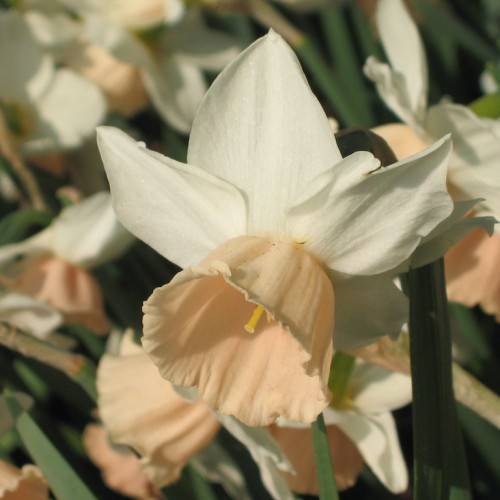
triandrus daffodil
Narcissus 'Katie Heath'
Cycle:
Perennial
Watering:
Average
Hardiness Zone:
4 - 9
Flowers:
Flowers
Sun:
Full sun,part shade
Leaf:
Yes
Growth Rate:
Low
Maintenance:
Low
Care Level:
Medium
watering
Triandrus daffodils (Narcissus 'Katie Heath') should be watered regularly during the growing season which is from the late spring to the early autumn. Water when the top inch or 2 of soil becomes dry but not so much that the soil is soggy. During the warmer summer days, they may need watering more often, so check the soil moisture level regularly (for example every 3-4 days) to gauge how much they should be watered. Make sure to water the soil directly and avoid getting the foliage wet. During the winter months, keep the soil barely moist, only watering when it is completely dry. In colder regions, mulching or insulating the soil around the daffodils can help preserve moisture.
sunlight
Triandrus daffodil (Narcissus 'Katie Heath') prefers full sun during the morning and partial shade during the afternoon. This will help to prevent excessive drying of the soil and encourage flowering. Aim for about 7-8 hours of direct sunlight each day for best results. Additionally, the bright light of the sun will help to bring out the rich colors of the Triandrus Daffodil.
pruning
Triandrus daffodil (Narcissus 'Katie Heath') should be pruned in late spring or early summer, after the plant has finished flowering. The best way to prune it is to cut the flowers off as soon as they start to fade, but leave the foliage intact. This will help encourage strong growth and blooms for the next season. Additionally, you can encourage stronger blooming by trimming back the foliage by about 1/3 after flowering is finished. Be sure to cut off any dead or diseased foliage as well.
